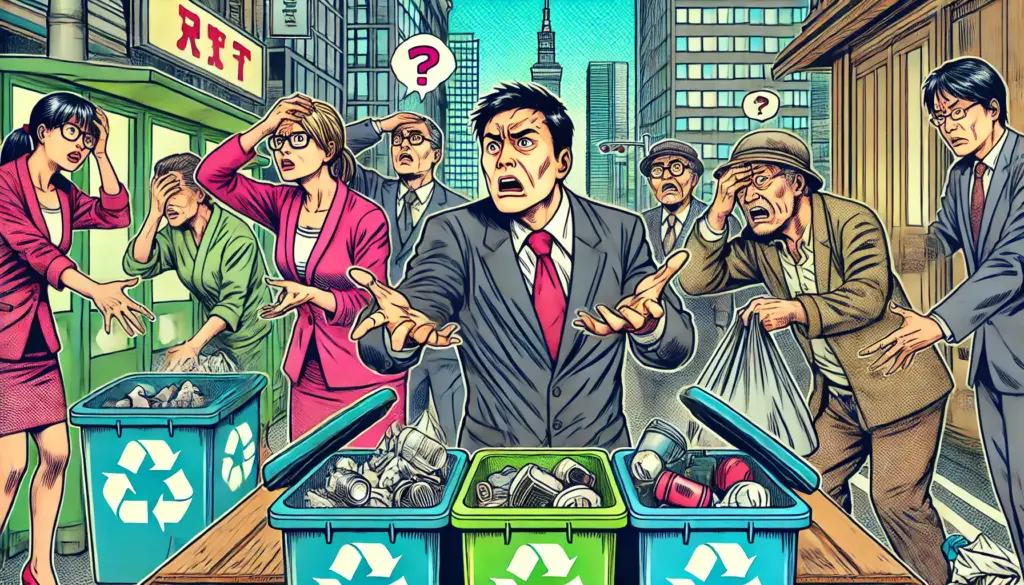
Navigating garbage rules in Japan can be surprisingly tricky—even within Tokyo’s 23 wards. Depending on where you live, the categories, bags, schedules, and procedures differ significantly. This article unpacks how these variations play out, how to check your local rules, and highlights which areas are easier or more challenging. I’ve also added my own take on why this patchwork exists—and how to adapt smoothly.
The Why Behind the Complexity
- Decentralized Regulations
Each municipality, including Tokyo’s wards, defines its own waste separation and collection rules under national law. This means there is no single standard across the country. - Infrastructure Differences
The categorization depends heavily on local waste-processing facilities. Some areas with modern incinerators can burn certain plastics, while others treat them as non-burnable due to equipment limitations. - Historical and Environmental Roots
Many of today’s detailed rules originated in the 1990s, when concerns over landfill shortages and dioxin emissions led to strict recycling and sorting systems.
Variations Within Tokyo: What Changes from Ward to Ward?
Most wards in Tokyo classify trash into five main types: burnable, non-burnable, recyclables (bottles, cans, paper), PET bottles, and bulky items.
However, the details differ widely:
- Bag Requirements: Many wards allow any transparent or semi-transparent bag, while others may recommend or require specific ones.
- Sorting Nuances: In some wards, plastic packaging is treated as burnable, while others separate it as recyclable.
- PET Bottles & Labels: Certain wards require caps and labels to be removed from PET bottles; others do not.
- Collection Frequency: Burnable waste is often collected twice weekly; non-burnable and recyclables are less frequent; bulky items require appointments and fees.
- Schedule Specificity: Collection days can vary not just by ward, but by street or block, with precise drop-off times.
How to Check Your Local Rules
- Local Ward Office or Website: Most provide multilingual guides on sorting, collection days, and procedures.
- Apps and Digital Tools: Some wards offer smartphone apps that show collection schedules and sorting instructions.
- Landlord / Neighbors: For apartment dwellers, it’s often easiest to check posted notices or ask neighbors about routines.
Which Areas Make Sorting Easier—or More Difficult?
Easier Zones
- Wards with user-friendly apps and reminder systems.
- Areas without designated bag requirements and with simple category rules.
More Challenging Areas
- Wards with detailed separation rules for plastics, paper, and PET bottles.
- Places that require extra preparation, like removing labels or rinsing containers.
- Neighborhoods with varying rules depending on the block.
My Take: Embrace the Patchwork
While Japan’s garbage system can seem overwhelming, the variations often reflect environmental priorities and local capacity.
Here are a few tips to make it easier:
- Think “local first”—rules from another area may not apply where you live.
- Use tech tools if available.
- Sort immediately after using items to avoid pile-ups.
- Ask your neighbors—they often have practical shortcuts and advice.
Quick Comparison Table
| Zone Type | Why It’s Easier | Why It’s Harder |
|---|---|---|
| High-tech wards | Clear rules, apps, no bag restrictions | Still requires learning new rules |
| Traditional wards | Familiarity for long-time residents | Designated bags and strict separation |
| Neighborhood-level | Local knowledge simplifies compliance | Rules may vary by street or block |



















































